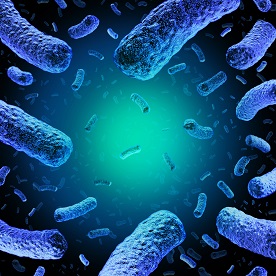The Return of Listeria
Introduction
Picture this: It's a scorching summer day, and you're standing in line at your favorite ice cream shop, torn between flavors and toppings. However, what if the seemingly innocent act of choosing your treat was overshadowed by a silent threat?
Enter Listeria monocytogenes, a bacterium lurking in that beloved cold dessert.Listeria monocytogenes, infamous for causing listeriosis, is not limited to ice cream—it can be found in an array of foods, including raw vegetables, meat, and dairy products. While most healthy individuals may experience only mild flu-like symptoms from consuming contaminated food, certain demographics face grave risks.Groups such as the elderly, pregnant women, newborns, and individuals with compromised immune systems are particularly susceptible to severe illness from Listeria monocytogenes. For them, listeriosis can escalate into dangerous conditions like meningitis, posing significant health threats. Symptoms of listeriosis vary but can include fever, muscle aches, nausea, and diarrhea. In severe cases, the infection can progress to affect the nervous system, leading to symptoms such as headache, stiff neck, confusion, and convulsions. Swift diagnosis and treatment, often involving antibiotics, are crucial, especially for high-risk individuals.To combat Listeria monocytogenes contamination, stringent food handling and hygiene practices are imperative. From thorough cooking of raw foods to meticulous washing of produce, proper precautions can significantly reduce the risk of infection.The prevalence of Listeria monocytogenes in the food supply chain can be influenced by environmental conditions and human activities. Understanding these factors is essential for implementing effective prevention strategies and mitigating risks to public health.Delving into the gene expression of Listeria monocytogenes provides valuable insights into its virulence and antibiotic resistance mechanisms. By deciphering its genetic makeup, researchers can better understand how this pathogen interacts with the human body and the environment, aiding in the development of targeted interventions.
Overview

By [Chris Chu]
The discovery of Listeria monocytogenes is dated in 1924 where three bacteriologists isolated L. monocytogenes as etiological agents (microorganisms that cause diseases in humans[1]) by injecting rodents in an experiment. One of the microbiologists, E.G.D Murray, isolated the gram-positive rods from the blood of a rodent; however, could not identify the pathogenic microorganism to any genus known resulting in calling it Bacterium monocytogenes[2]. The first recorded case of Listeria monocytogenes in humans dates all the way back to Denmark in 1929. However, the first ever culture of L. monocytogenes was isolated in France from a patient with meningitis[3]. After twenty years of listeriosis discovery, the bacteria was found mostly among livestock, and mostly in small rodents.[4]. Very few cases were found in humans making it very rare and uncommon. This resulted in little to no mention in famous textbooks on bacteriology. It wasn’t until the late 40s that Dr. Stanley extracted monocytosis producing agents from living rabbit cells and described them as lipids[5]. His discovery helped broaden the understanding of how monocytes are distributed throughout the body and contribute to their development in the immune system.
- ↑ Biological Materials Shipping Manual - campus services. (n.d.). https://campus.und.edu/safety/_files/docs/biological-materials-shipping-manual.pdf
- ↑ H. Hof, History and epidemiology of listeriosis, FEMS Immunology & Medical Microbiology, Volume 35, Issue 3, April 2003, Pages 199–202, https://doi.org/10.1016/S0928-8244(02)00471-6
- ↑ https://www.ncbi.nlm.nih.gov/pmc/articles/PMC88991/#:~:text=The%20first%20cases%20of%20human,meningitis%20(159%2C%20604).
- ↑ Seeliger HP. Listeriosis--history and actual developments. Infection. 1988;16 Suppl 2:S80-4. doi: 10.1007/BF01639726. PMID: 3138193.
- ↑ Seeliger HP. Listeriosis--history and actual developments. Infection. 1988;16 Suppl 2:S80-4. doi: 10.1007/BF01639726. PMID: 3138193.
